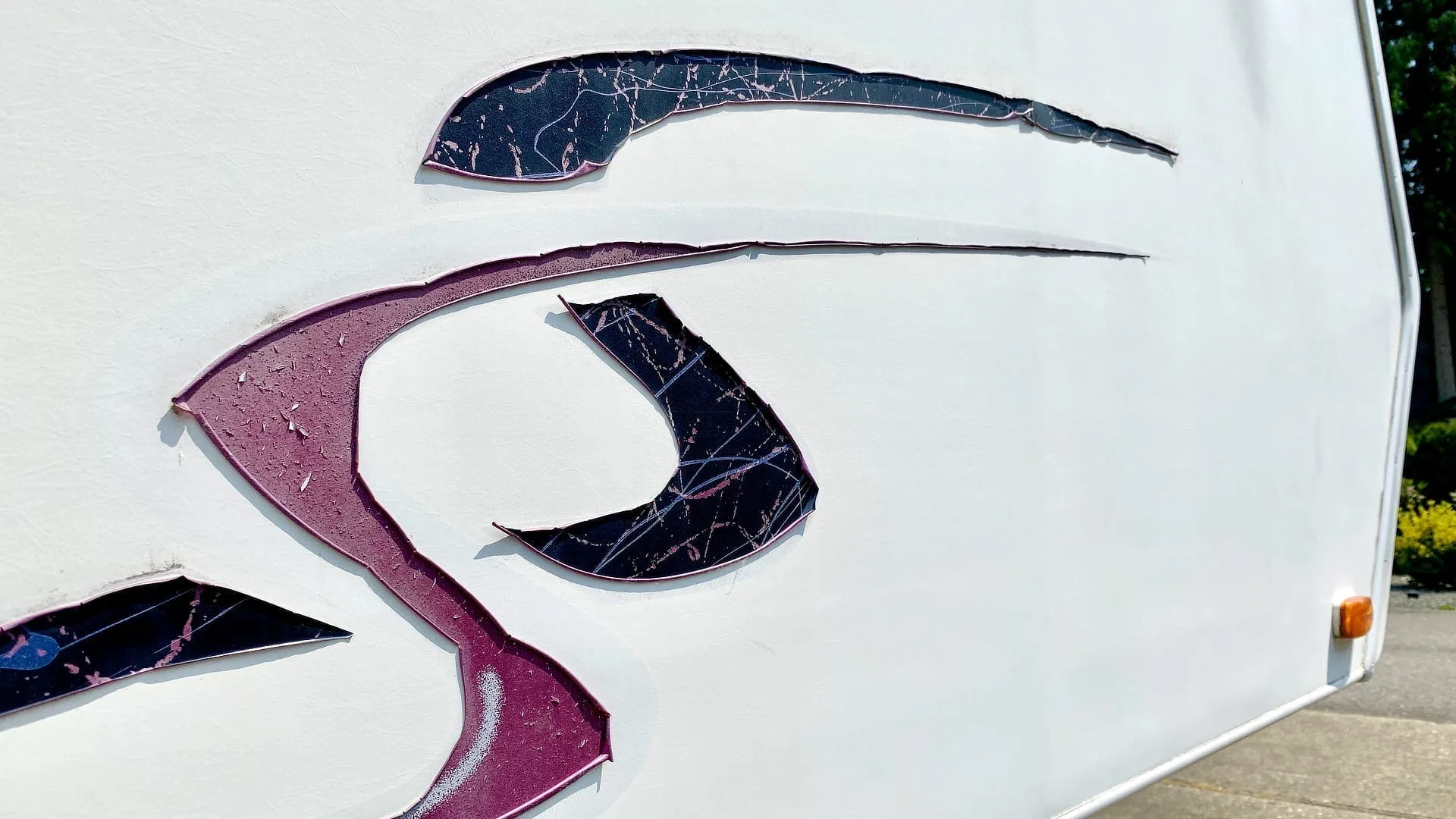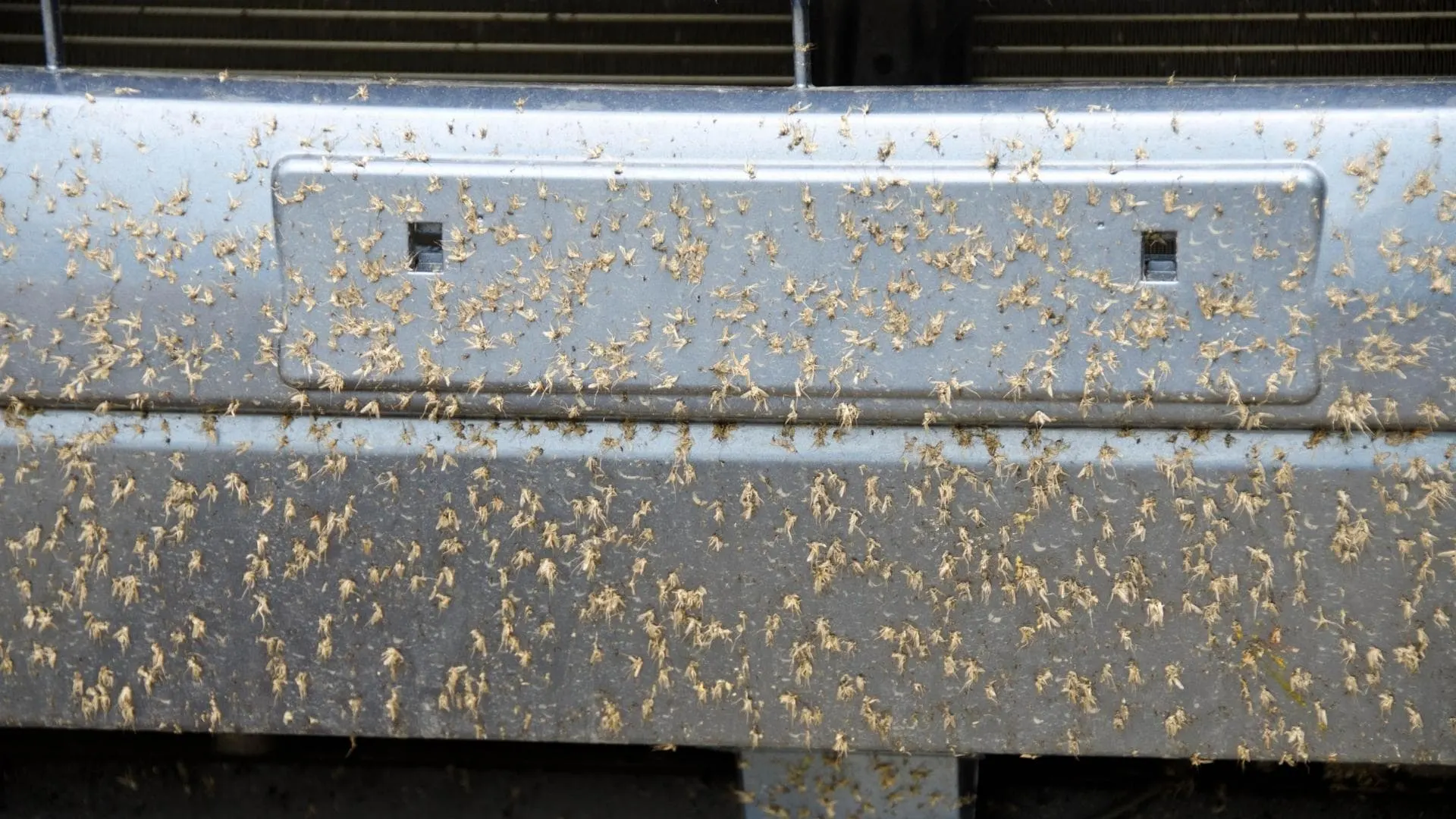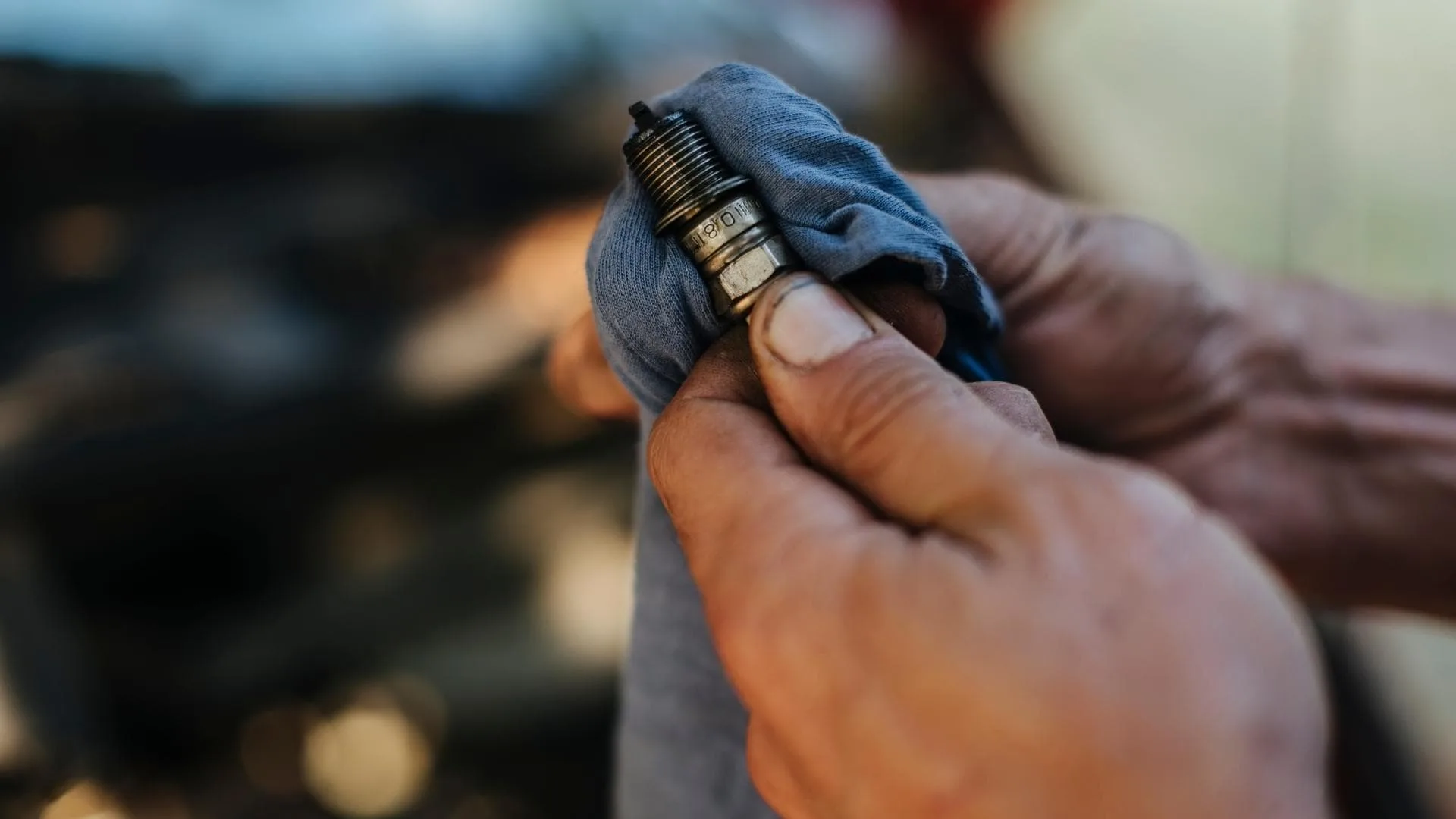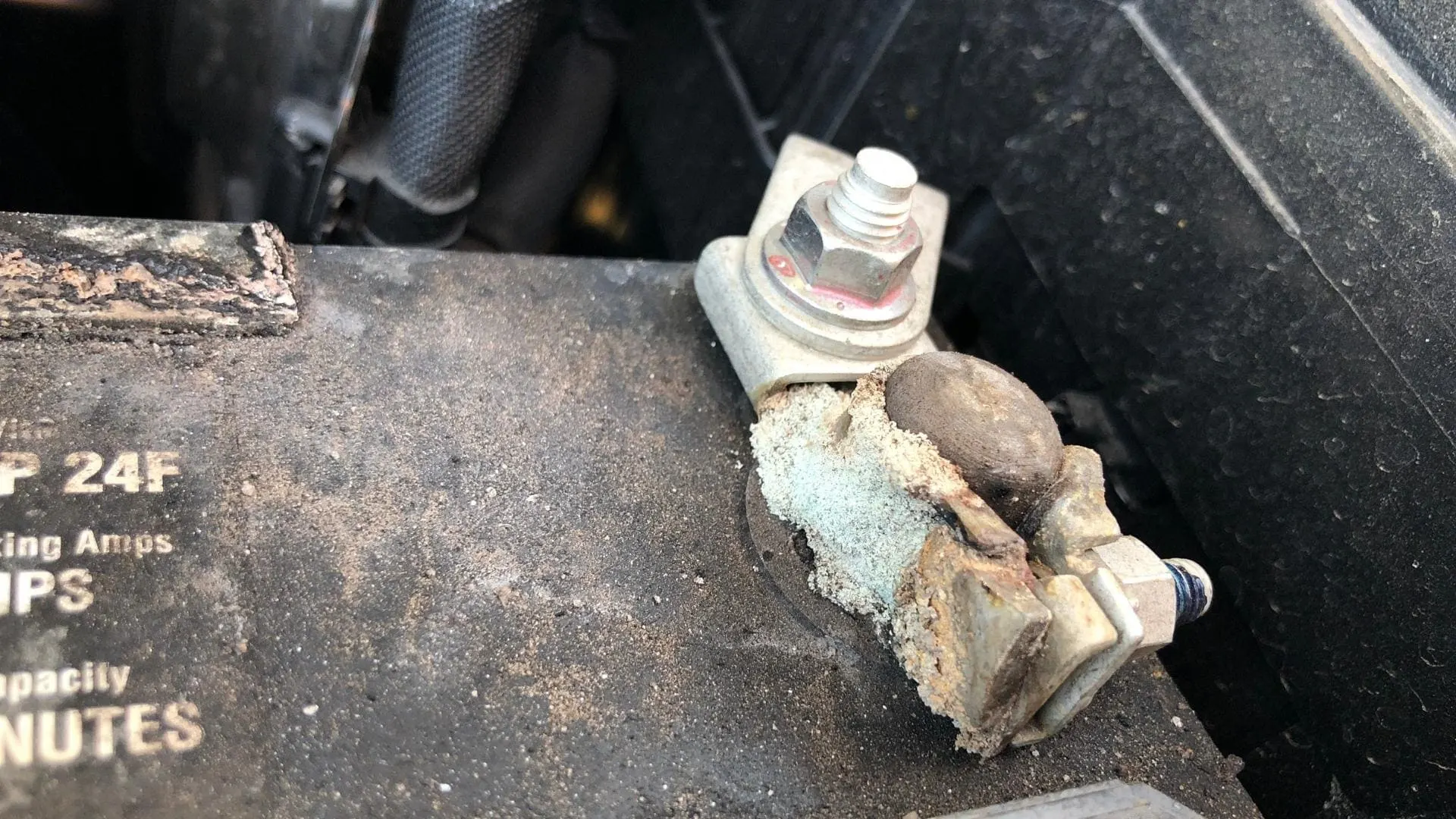We’ve all heard of WD-40, and most of us have probably used it a time or two. Over the years we’ve learned about lots of great WD-40 uses on cars, and many of these uses apply to RVs as well. So today we’re running through 21 uses for WD-40 that you might find useful for your RV!
- 1) What Is WD-40?
- 2) What’s the Origin of the Name “WD-40”?
- 3) What’s In WD-40?
- 4) What Are Some Unconventional Uses of WD-40?
-
5)
21 WD-40 Uses on Cars that Are Useful for RVs
- 5.1) Decal Removal
- 5.2) Clean Your License Plate
- 5.3) Bug Removal
- 5.4) Scuff Mark/Paint Smudge Removal
- 5.5) Clean Wheel Wells
- 5.6) Loosen Nuts & Bolts
- 5.7) Lubricate Windshield Wiper Rubber
- 5.8) Clean Spark Plugs
- 5.9) Lubricate & Protect Weather Stripping
- 5.10) Clean & Protect Rubber Seals
- 5.11) Dry Out Moisture in a Flooded Engine
- 5.12) Dry Out Moisture from Power Tools & Electronic Appliances
- 5.13) Prevent Oxidation on Battery Terminals
- 5.14) Shine & Protect Chrome
- 5.15) Loosen Caked-on Dirt & Grime
- 5.16) Lubricate Door Hinges & Hood Latches
- 5.17) Clean & Keep Dead Bugs Off Your Grille
- 5.18) Keep Bees from Making Nests in Common Nest-Building Areas
- 5.19) Keep Spiders Away
- 5.20) Keep Locks from Freezing
- 5.21) Remove Marker and Crayon
- 6) Every RV Should Stock Some WD-40 in Their Tool Kit
- 7) What Are Some of Your Favorite Uses for WD-40?
What Is WD-40?
WD-40 is actually a brand name. WD-40 is an American company based in San Diego, California, and “WD-40” is also the trademark of the popular oil we all know.
The formula for WD-40 was actually invented for the Rocket Chemical Company back in the early 1950s, and it later became the WD-40 Company. The commercial product we know to this day as WD-40 first became available in 1961. This classic oil can be used as a lubricant, penetrant, moisture displacer, and rust preventative.
According to the company’s website, the aerospace contractor Convair first used WD-40 as a protective agent against rust and corrosion on the outer skin of the Atlas Missile.
A few years later they created an aerosol spray version of the product, and that’s the product we buy to this day.
What’s the Origin of the Name “WD-40”?
WD-40 stands for “Water Displacement – 40th formula”, according to the lab book used by the chemist who developed it.
Back in 1953, Rocket Chemical Company had a staff of only three. They were on a mission to create a line of rust-prevention solvents and degreasers for use in the aerospace industry. They worked together in a small lab in San Diego, and it took them 40 attempts to get the formula figured out. The original “secret formula” is the one that’s still in use today!

WD-40 received its name from the three chemists who worked on its development…and got it right on the 40th try!
What’s In WD-40?
Well, we can’t tell you that. WD-40’s formula remains a secret to this day. The original copy of the formula was placed in a bank vault in San Diego in 2018.
In fact, the product wasn’t patented back in the 50s in an effort to avoid having to disclose the formula.
What we can tell you is this: The aerosol cans contain a formula which, according to the U.S. Material Safety Data Sheet information, has the following content based on interpretation of its CAS numbers:
- 45–50% low vapor pressure aliphatic hydrocarbon (isoparaffin)
- <35% petroleum base oil (non-hazardous heavy paraffin)
- <25% aliphatic hydrocarbons (same CAS number as the first item, but flammable)
- 2–3% carbon dioxide (propellant)
Interestingly, the European and Australian formulations are different.
Contrary to popular lore, WD-40 does NOT contain fish oil, silicone, kerosene, graphite, wax, water, or CFCs (chlorofluorocarbons).
What Are Some Unconventional Uses of WD-40?
Well, according to our research, police officers used WD-40 to release a naked burglar from an air conditioning vent in which he was trapped.
And if that’s not unconventional enough for you, in Asia a python coiled itself around the undercarriage of a bus, and the bus driver used WD-40 to remove it.
This is why it’s good to always have a can of WD-40 on hand…because you never know when a naked burglar or a python will need your assistance in being set free!
21 WD-40 Uses on Cars that Are Useful for RVs
Let’s get to the WD-40 uses on cars that may also be useful for RVs:
Decal Removal

WD-40 can help to remove old, faded decals like the ones on the side of this RV.
As we noted in our post on how to do RV decal removal yourself, products like WD-40 can be useful for decal removal. We always caution people to be sure to test products on an inconspicuous part of your RV to make sure it won’t damage the finish or fiberglass gel coat of your rig.
WD-40 can also help to remove other sticky residues such as price stickers or labels you want to remove from glass jars, etc.
Clean Your License Plate
License plates get dirty. How could they not? Mud, road grime, insects, and anything else that collects on your license plates can be cleaned right off using WD-40.
Bug Removal
Along similar lines, bugs that splatter and collect on the front of your RV bumper can be a real chore to clean off. A little WD-40 goes a long way to loosen them, allowing you to wipe them away. Again, test any surface in an inconspicuous area prior to using any substance on larger areas.

Driving, especially in the summer months, can result in hundreds or even thousands of dead bugs on your RV bumper. WD-40 can be handy in removing them, but be sure to test the surface in an inconspicuous area prior to widely using the product on your bumper or anywhere else.
Scuff Mark/Paint Smudge Removal
If your rig has been swiped by another vehicle leaving a paint smudge, or if you’ve swiped something while backing or turning, WD-40 can often be very successful in removing scuff marks and paint smudges.
Obviously, deep scratches aren’t going to go away so easily, but for scuff marks and paint smudges, WD-40 can do the trick.
Clean Wheel Wells
Wheel wells really take a hit on the road. Lots of grime, dust, and dirt accumulates and can be very stubborn when you attempt to clean the area when you’re washing your rig.
After removing chunks of mud, dirt, and debris, you can use WD-40 to clean the wheel wells. However – NEVER SPRAY WD-40 or any other type of penetrating oil or cleaner into this area. Always spray the WD-40 on a CLOTH, and then use the cloth to directly clean the wheel wells in the area where they need help.
It’s very important that you never spray WD-40 near your brakes because it can get onto the wheels and into the brake pads, and that should be avoided at all costs.
Loosen Nuts & Bolts
Nuts and bolts that are old, rusted, or just stuck from an accumulation of grime can often be loosened with WD-40. This works best if you spray a little on the area and leave it for a bit to allow it to work, but often works relatively immediately. Another trick is to tap lightly with a hammer or wrench after spraying. This vibration helps draw the oil into the threads.
Pro Tip — As much as we love WD-40, and all the many uses we have for it, nuts and bolts that are truly stuck may call for second-level support: Liquid Wrench. (The same technique of tapping lightly with a hammer still applies.)
- 4 oz
- Dissolves rust & cuts through grease
Lubricate Windshield Wiper Rubber
To keep the rubber of your windshield wipers from drying out, cracking, and fraying (thus extending the life of the wipers), spray a little WD-40 on a cloth and rub it firmly onto the rubber portion of the wiper. You want the oil to penetrate the rubber as well as possible.
Again, never spray the wiper as you’re likely to get the oil on your windshield, your hood, and even in the engine compartment through the vents. Spray the oil on a cloth and then wipe it directly on the rubber. This can also help to reduce or eliminate any annoying rubbing sounds your wipers make when in use.
Clean Spark Plugs

Need to clean a spark plug? WD-40 may be just the ticket!
WD-40 oil is a great way to clean a spark plug! Spray the oil directly on the spark plug and let it sit for a couple of minutes before wiping away the oily residue. You can do this on your RV’s spark plug or the spark plugs of your generator, toad, or your lawnmower at home. Any spark plugs that need cleaning are likely to benefit from a quick spray of WD-40.
Lubricate & Protect Weather Stripping
As with the rubber on your windshield wipers, weather stripping around your RV can benefit from some lubrication with WD-40. As always, spray the formula on a cloth and then rub it onto the weather stripping. This will extend the life of your weather stripping by keeping it from drying out.
Clean & Protect Rubber Seals
If (and only if) your RV manufacturer recommends treating slide-out seals, WD-40 can work to clean and protect them as well. We’re including this because it’s somewhat popular as a means of cleaning and protecting rubber gaskets.
However… we use baby powder to prevent slide-out seals from sticking. We’ve found that it not only works very well (ALL of our slideout seals are original) but also helps avoid getting sticky or tacky material onto the seals.
Anything sticky tends to attract and retain dirt and can make matters worse, so be aware of this, and check your RV manufacturer’s recommendations prior to using any type of oil.
NOTE: Exposure to talc has been linked to ovarian cancer. Talc-free baby powder exists, with cornstarch as the active ingredient.
Dry Out Moisture in a Flooded Engine
As you already know from our earlier description of WD-40, one of its main uses is as a water displacement agent. For this reason, WD-40 is capable of drying out the moisture in a flooded engine.
Use only on a cold engine, away from heat sources.
Dry Out Moisture from Power Tools & Electronic Appliances
WD-40 can also be used to drive out moisture from the circuits of power tools and other electronic appliances (including generators) that you may have around your RV. The purpose of using WD-40 in this manner is to reduce the risk of short circuits that can be caused by moisture.
When using WD-40 for these purposes, you’ll want to use the provided “Smart Straw” as it allows you to aim the WD-40 accurately to displace the water.
And of course, the power must always be off when using WD-40 for any of these purposes.
Prevent Oxidation on Battery Terminals
WD-40 on battery terminals helps to prevent oxidation from forming.
If you’ve already got a battery with corrosion on the terminals, WD-40 can help you there as well. Simply spray some on each of the battery terminals (and on the cable connections if they’re grimy).

WD-40 can not only help you to clean corrosion from a battery terminal but can keep corrosion from forming in the first place.
Let it sit for a few minutes, and then scrub it with a small brush, and rinse with hot water. In cases of significant corrosion, you may need to repeat this step till the corrosion is gone. And be sure to avoid getting the solution on your skin, eyes, or clothing!
Shine & Protect Chrome
WD-40 can not only shine your chrome brilliantly but can also act as a protectant to the chrome finish.
It’s always best not to spray directly on areas like this, but rather to spray the product on a cloth, and then use the cloth to shine the chrome.
Loosen Caked-on Dirt & Grime
Anywhere there’s caked-on dirt and grime, WD-40 can help to loosen it. If some mud has splashed up onto your rig and the sun has baked it on the surface, scraping caked-on grime can scratch the finish.
If you first loosen the caked-on (baked-on) grime with WD-40 (let it sit for a few minutes), cleaning it off will be easier and less likely to scratch the surface you’re cleaning.
Lubricate Door Hinges & Hood Latches
WD-40 is great for lubricating door hinges and hood latches on the RV itself, and can also serve the same purpose inside the RV living space if you’ve got squeaks here and there.
Clean & Keep Dead Bugs Off Your Grille
We covered bug removal earlier in the post, but the grille of your RV deserves its own special mention because it can really get caked with bugs. Not only can you clean the bugs off using WD-40, but the oil can help to keep dead bugs from sticking to your grill as well.
Keep Bees from Making Nests in Common Nest-Building Areas
Bees often build nests under the AC shroud or vent caps on the roof of the RV. A little WD-40 in the most common areas where bees tend to do their thing can keep them from using your RV for their condo construction and moving on to the RV next door instead. ????
Keep Spiders Away
Apparently, we should have had a 55-gallon drum of WD-40 handy while we were RVing in Australia, where we saw a spider roughly the size of John’s head. Don’t believe us?
Keep Locks from Freezing
If you live or RV in cold climates, you can keep your rig’s locks from freezing by spraying a little WD-40 into the lock. (Use your Smart Straw for this one, too!)
Remove Marker and Crayon
Crayola® offers stain removal tips for parents because kids tend to think everything is a canvas screaming out for their unique artwork. Among their recommendations is to use WD-40 to remove regular crayon marks from a variety of surfaces.
Here as well you’ll want to first test the WD-40 in an inconspicuous area on the surface you’re treating prior to using it in a more visible area.
Every RV Should Stock Some WD-40 in Their Tool Kit
WD-40 is such a useful product, we can’t imagine not having some on board.
- Drives out moisture and quickly dries out electrical systems to eliminate moisture-induced short circuits
- Acts as a corrosion inhibitor to shield against moisture and other corrosive elements to prevent rust
What Are Some of Your Favorite Uses for WD-40?
Have you found even more uses for WD-40 on your RV? Let everybody know about your tip in the comments section!
Geek Out with Us Every Week
Join our newsletter to learn about all things RV-related. Every week we offer free tips, tricks, product reviews, and more to our online community of RVers. So, whether this is your first time on the road or you’re a seasoned expert, we’d love for you to geek out with us!



![WD-40 Original Formula, Multi-Use Product with Smart Straw Sprays 2 Ways, 14.4 OZ [2-Pack]](https://m.media-amazon.com/images/I/51zKbE6lzrL._SL160_.jpg)
Jim Brown
Monday 15th of May 2023
I use it to lubricate electrical plugs especially the 50 AMP plug for the RV. Keeps the contacts clean and makes plugging and unplugging much easier.
Ralph Alder
Monday 15th of May 2023
WD40 is the only thing I’ve found that works to clean-up/remove Dicor Lap Sealant. It softens it and makes it possible to remove it. It isn’t instantaneous but with some elbow grease it does work. It is also the absolute best solvent to use on my fave sealant BoatLife Life Caulk commonly used in boating circles. It dissolves the nasty black stuff that is so difficult to clean from fingers. It works far better than acetone, the only other solvent that works and acetone is not good for your skin.
Ray Jahn
Monday 23rd of May 2022
HWH recommends WD40 to wipe down leveling jacks.
John Schretlen
Monday 16th of May 2022
WD-40 works well for a lot of uses and it's okay for others. But when it comes to anything that you don't want to get sticky then there are better products. Just one example:
"However… we use baby powder to prevent slide-out seals from sticking. We’ve found that it not only works very well (ALL of our slideout seals are original) but also helps avoid getting sticky or tacky material onto the seals."
100% agree and I do the same before every big trip.
Larry
Monday 16th of May 2022
I have an old briefcase that I keep everything that pertains o our Blue Ox tow bar in. It rides on the backseat in our towed. Gloves, paper towels, a 4 lb engineers hammer to beat the punches that I have to use to remove the pins from the Ox fingers that are stuck in position in the car "knuckle - antler things" when the whole mess is all torqued from travel and impossible to release without major force. Oh, and WD-40...to lube said pins prior to install as well as during the last stop before unhooking, so they MIGHT remove without the happy hammer technique. Stay lubricated, my friends.
TheRVgeeks
Monday 16th of May 2022
LOL! Everyone has their system... and it's always interesting to hear about them. For those Blue Ox "fingers" where the locking pins go through, you might want to consider using something that won't attract/trap dirt or grit... like a dry lithium grease, instead of the WD-40. As lightweight as the WD-40 is, it still leaves a slightly oily residue behind... which is a magnet for all the dirt, dust, debris, and spray being thrown up by the RV as you're going down the road. Might help you from having to beat the snot out of them to unhitch! ????